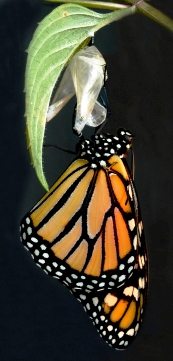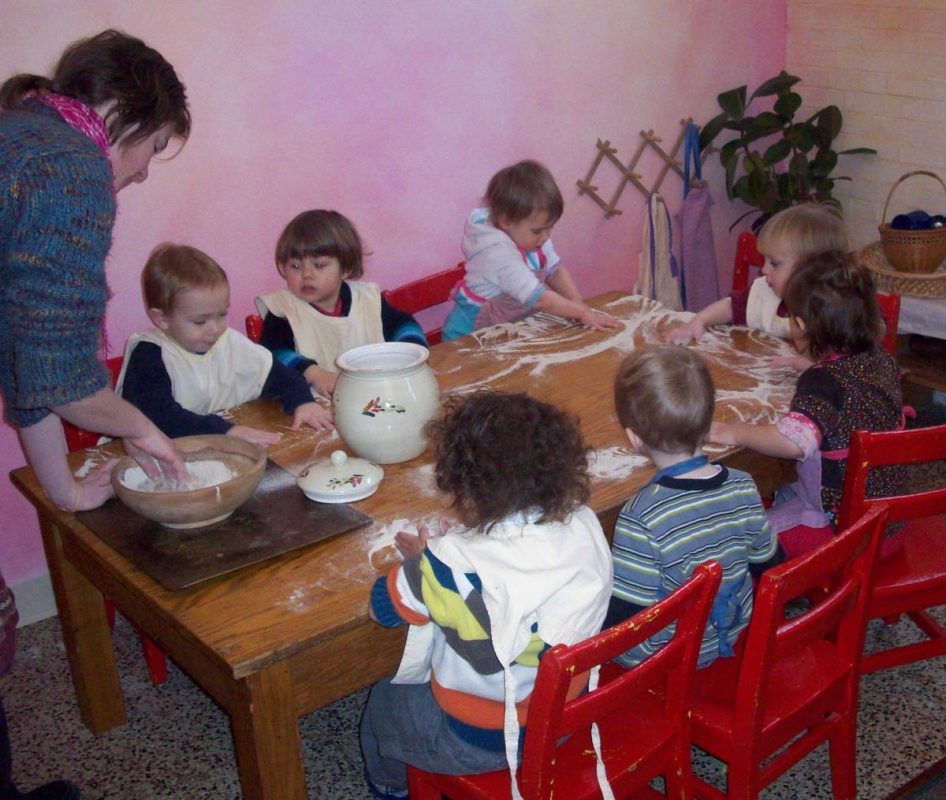For me, providing a rhythmical day for the children at Rainbow Bridge (ages 1-5) felt like one of the most important and life-giving things I was doing with and for them. The Veiled Pulse of Time, a book on biographical cycles by William Bryant, increased that conviction through his consideration of the nature of time. It also provided interesting insights into various cycles of adult life. (He discusses the 7,12 and 30-year cycles in some detail.)
Bryant’s discussion of the “etheric body” as the “time organism” contained some new ideas for me. I’ll see if I can summarize some of it. Rudolf Steiner describes how each living organism—plant, animal and human—has not only a physical body, but an “etheric body” consisting of life forces that determine 1) that it is alive and 2) the vitality and forms it will have as it unfolds over time. For example, this life/formative/time body guides the butterfly from egg to larva to pupa to winged-insect, or it determines that most of us will be heavier in middle age than we were in our 30s. As a “time body” or “time organism,” it is the part of us that lives in time—step out of changing in time for very long and your body returns to its elemental (nonliving) components.
a physical body, but an “etheric body” consisting of life forces that determine 1) that it is alive and 2) the vitality and forms it will have as it unfolds over time. For example, this life/formative/time body guides the butterfly from egg to larva to pupa to winged-insect, or it determines that most of us will be heavier in middle age than we were in our 30s. As a “time body” or “time organism,” it is the part of us that lives in time—step out of changing in time for very long and your body returns to its elemental (nonliving) components.
Bryant’s focus on the various aspects of what it means to unfold in time underscored why the rhythmical life we establish for young children is so important and so life giving. Time is characterized by rhythm and by beat. We experience the regularity and rhythmical return of the hours, days, lunar months and years, and within those we have the ebbing and flowing of our individual lives, from the circadian rhythms that guide most living organisms (even when they are studied in the dark), to whether we feel more energetic in the morning or delight in being “night owls.” All aspects of health of our inner organs, of their functions like breathing and digestion, and of our psychological well-being and growth, depend on rhythmical expansion and contraction. He states, “When our biorhythms are harmonious, we notice little except perhaps a feeling of well-being, but any deviation from the natural frequencies will sooner or later warn us of impending breakdown,” and he goes on to discuss cancer, asthma and migraines as illnesses relating to “time aberrations.”
 In Simplicity Parenting, Kim Payne recommends rhythm as the second of four areas for revitalizing family life (after de-cluttering). Bryant provides background for why rhythm makes such a difference to us as adults and, consequently, why it is even more important for the young child, who is all sense organ and trying to come into rhythm in earthly life. During the first seven years the child’s etheric body is “reworking” all of his or her internal organs to establish health (or illness)—another reason why being in nature, with its inherent rhythms, is so important for the young child.
In Simplicity Parenting, Kim Payne recommends rhythm as the second of four areas for revitalizing family life (after de-cluttering). Bryant provides background for why rhythm makes such a difference to us as adults and, consequently, why it is even more important for the young child, who is all sense organ and trying to come into rhythm in earthly life. During the first seven years the child’s etheric body is “reworking” all of his or her internal organs to establish health (or illness)—another reason why being in nature, with its inherent rhythms, is so important for the young child.
William Bryant was a Waldorf teacher for many years; his book, The Veiled Pulse of Time, is available online at www.steinerbooks.org or www.steinercollege.edu/bookstore.
Rahima Baldwin Dancy is a founding board member of LifeWays North America and has been involved with Waldorf early childhood since 1980. She is internationally known as the author of You Are Your Child’s First Teacher, now available in a third, revised edition.
We thank you for stopping by to enjoy this article. If you would like to share your experiences working with children in a LifeWays home or center, please feel free to contact Mara Spiropoulos at linearmara@gmail.com. She would be thrilled to work with you to share your wisdom and experiences on the LifeWays blog.
